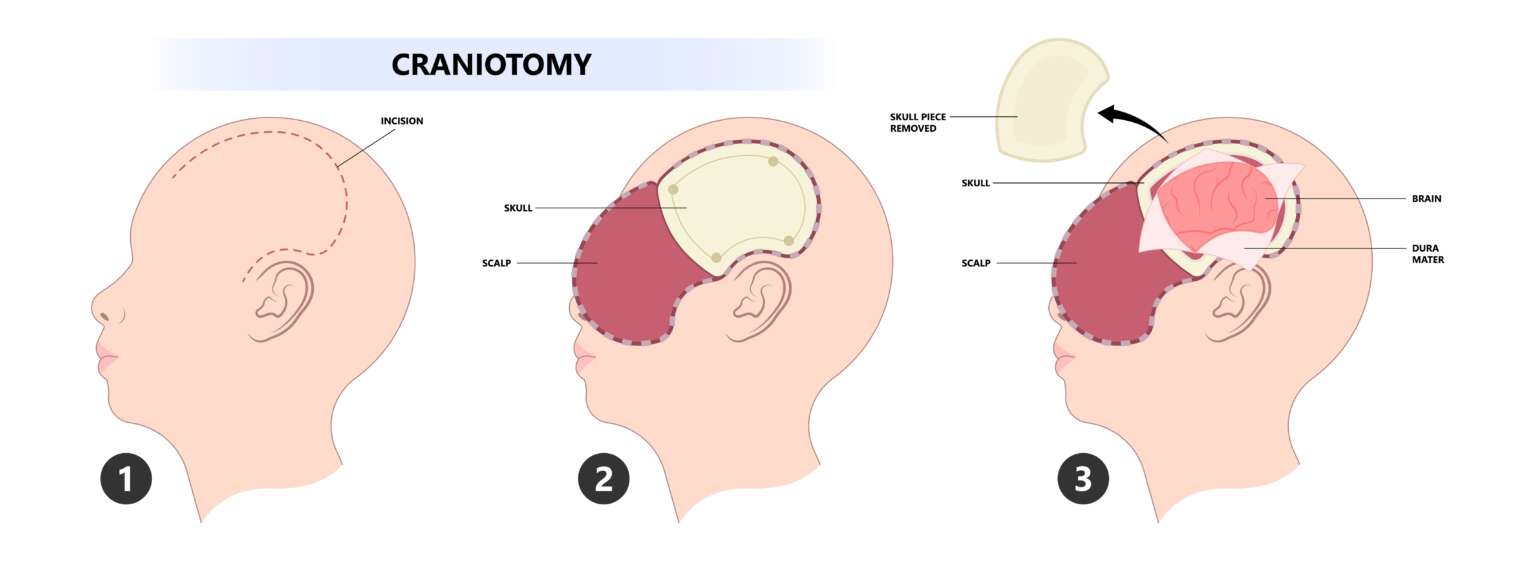
What is Craniotomy for Tumor Removal?
Procedures
The surgeon will make the incision near the area of the brain that needs treatment. They may use a special saw to cut the bone flap, or a medical drill to create small holes.
This is followed by an incision made in the brain’s covering, the dura mater. Ideally, the tumor will be completely removed, if possible. The doctor will then stitch together any cut tissues, and reattach bone flaps with sutures, plates, or wires.
In some cases, complete removal may not be possible. Surgery can relieve symptoms and lower pressure within the brain even if the tumor cannot be completely removed.
If the tumor is only partially removed, it may need additional treatment, such as radiation therapy. Likewise, additional treatment may be required if the craniotomy reveals a malignant brain tumor.
